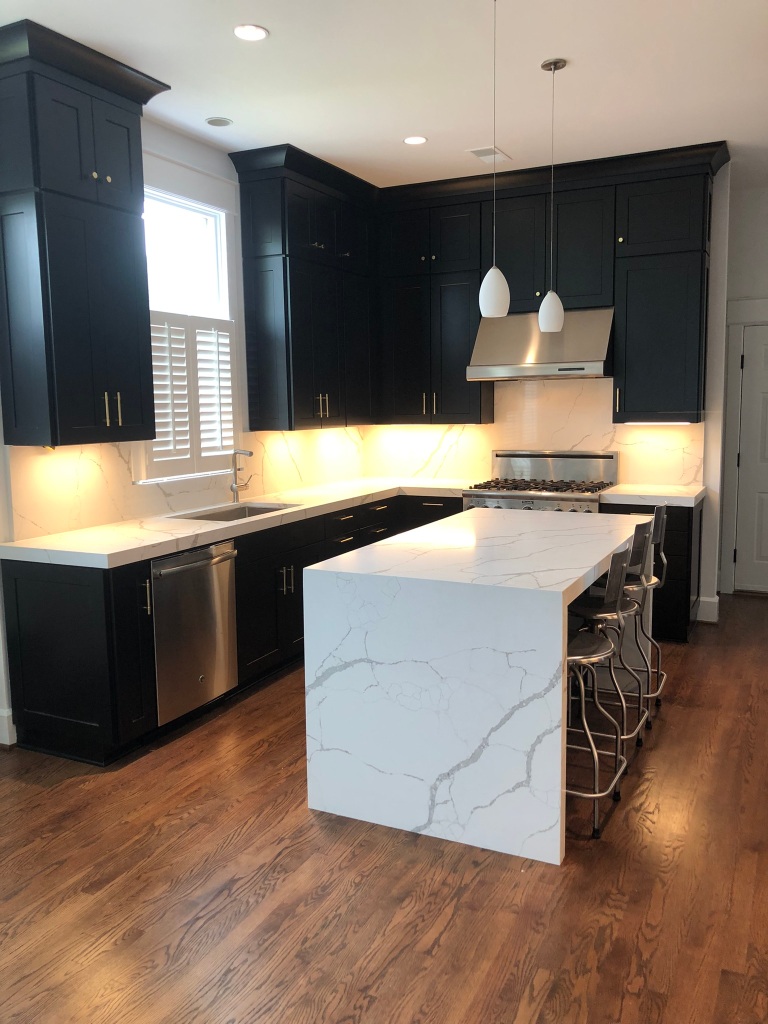Lighting is a transformative element that has the power to enhance the ambiance, functionality, and aesthetic appeal of any space. Whether you’re embarking on a new interior design project or revamping your current space, focusing on lighting enhancement can bring your vision to life. Here, we will delve into the world of lighting enhancement, exploring its impact, different types of lighting, and techniques to create stunning illumination that elevates your home.

- Understanding the Power of Lighting Enhancement:
a. Setting the Mood: Lighting sets the mood in a room, influencing emotions and perceptions. From warm and cozy to bright and invigorating, the right lighting can create the desired ambiance for each space, be it a relaxing bedroom, an energizing kitchen, or a sophisticated dining area.
b. Accentuating Architecture and Décor: Properly designed lighting can accentuate architectural features and highlight key design elements, such as artwork, sculptures, or unique architectural details. Well-placed fixtures can draw attention to focal points, adding depth and dimension to your space.
c. Enhancing Functionality: Effective lighting enhances the functionality and usability of a room. Task lighting provides focused illumination for specific activities like reading, cooking, or working, while ambient lighting creates an overall pleasant and well-lit environment.
d. Visual Comfort: Adequate lighting improves visual comfort, reducing eye strain and fatigue. By incorporating lighting solutions that minimize glare and provide even distribution of light, you can create spaces that are visually comfortable and inviting.
- Types of Lighting:

a. Ambient Lighting: Also known as general lighting, ambient lighting provides overall illumination to a room. It sets the foundation for the lighting scheme and ensures a comfortable level of brightness. Ceiling-mounted fixtures, recessed lights, and chandeliers are common choices for ambient lighting.
b. Task Lighting: Task lighting serves a specific purpose by providing focused light for activities that require clarity and concentration. Desk lamps, under-cabinet lighting, and reading lights are examples of task lighting solutions that enhance functionality and ensure optimal visibility.

c. Accent Lighting: Accent lighting is used to highlight specific areas, objects, or architectural features in a room. It adds drama and visual interest. Track lighting, wall sconces, and picture lights are popular choices for accent lighting, allowing you to draw attention to artwork, sculptures, or architectural details.
d. Decorative Lighting: Decorative lighting combines both form and function, serving as a focal point and adding a decorative element to the space. Chandeliers, pendant lights, and statement floor lamps fall into this category, elevating the aesthetic appeal of the room while providing illumination.
- Techniques for Lighting Enhancement:
a. Layered Lighting: Creating a well-balanced lighting scheme involves layering different types of lighting to achieve the desired effect. By combining ambient, task, accent, and decorative lighting, you can create a dynamic and versatile lighting design that caters to different needs and enhances the overall aesthetic.

b. Dimmers and Controls: Installing dimmer switches and lighting controls allows you to adjust the intensity and mood of the lighting according to different occasions and personal preferences. Dimmers provide flexibility, enabling you to create a soft, romantic glow or a vibrant, energetic ambiance.
c. Natural Light Integration: Harnessing natural light is a powerful way to enhance your lighting design. Maximize natural light by incorporating large windows, skylights, or glass doors to allow ample daylight to flood the space. Combine natural light with artificial lighting for a balanced and inviting atmosphere throughout the day.

d. Light Layering: Experiment with different lighting fixtures and placements to create layers of light within a space. Consider the interplay between direct and indirect lighting, such as uplighting, downlighting, or wall washing, to create depth and visual interest. Use adjustable fixtures to redirect light and highlight specific areas or objects.
e. Color Temperature and Bulb Selection: Pay attention to the color temperature of your light bulbs. Warm white light (around 2700-3000K) creates a cozy and intimate atmosphere, while cool white light (around 4000-5000K) provides a bright and energizing ambiance. Consider LED bulbs for energy efficiency and longevity.
f. Lighting Fixtures as Design Elements: Treat lighting fixtures as design elements that complement your overall interior style. Explore various shapes, materials, and finishes to find fixtures that not only provide illumination but also contribute to the aesthetic appeal of your space.

- Considerations for Lighting Enhancement:
a. Room Function and Layout: Different rooms have specific lighting requirements based on their function and layout. Consider the activities that take place in each space and plan your lighting accordingly. For example, kitchens benefit from bright task lighting, while bedrooms require softer and more relaxing lighting.

b. Scale and Proportion: Choose lighting fixtures that are proportionate to the size of the room. Oversized fixtures can overwhelm a small space, while undersized fixtures may appear insignificant in a larger room. Ensure that the scale of the fixtures aligns with the room’s dimensions.
c. Energy Efficiency: Opt for energy-efficient lighting options to reduce energy consumption and minimize environmental impact. LED bulbs, for instance, offer long lifespans and consume less energy compared to traditional incandescent bulbs. Look for lighting fixtures with energy-efficient labels or certifications.
d. Maintenance and Accessibility: Consider the ease of maintenance and accessibility when selecting lighting fixtures. Choose fixtures that are easy to clean and replace bulbs. Ensure that fixtures in hard-to-reach areas have long-lasting bulbs to minimize the frequency of replacements.
Lighting enhancement is a transformative aspect of interior design that can elevate the functionality, mood, and visual appeal of any space. By understanding the power of lighting, exploring different types of lighting, and implementing techniques to enhance illumination, you can create captivating and inviting environments. Embrace the art of lighting design, and watch as your space radiates with brilliance, bringing your vision to life in a whole new light.
